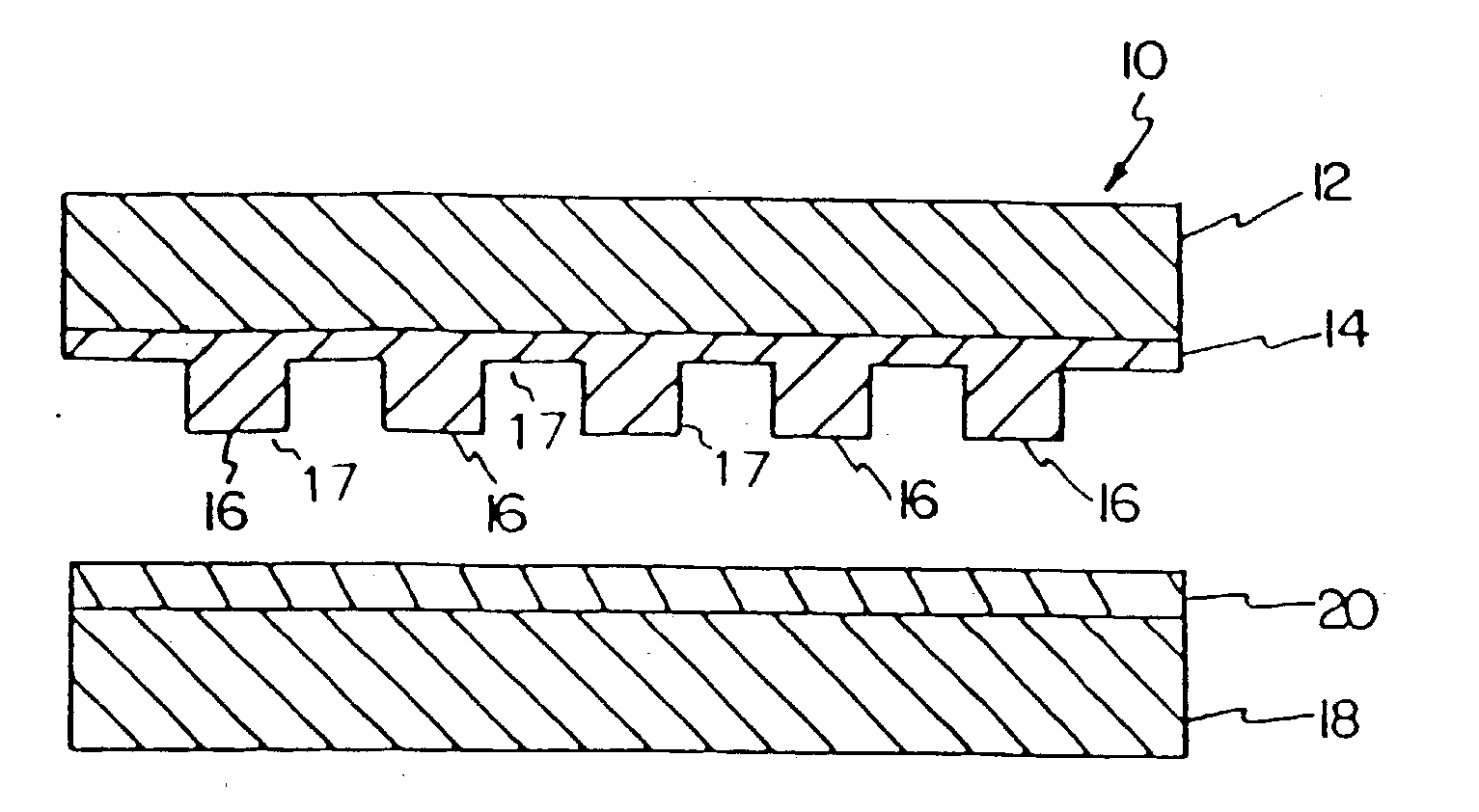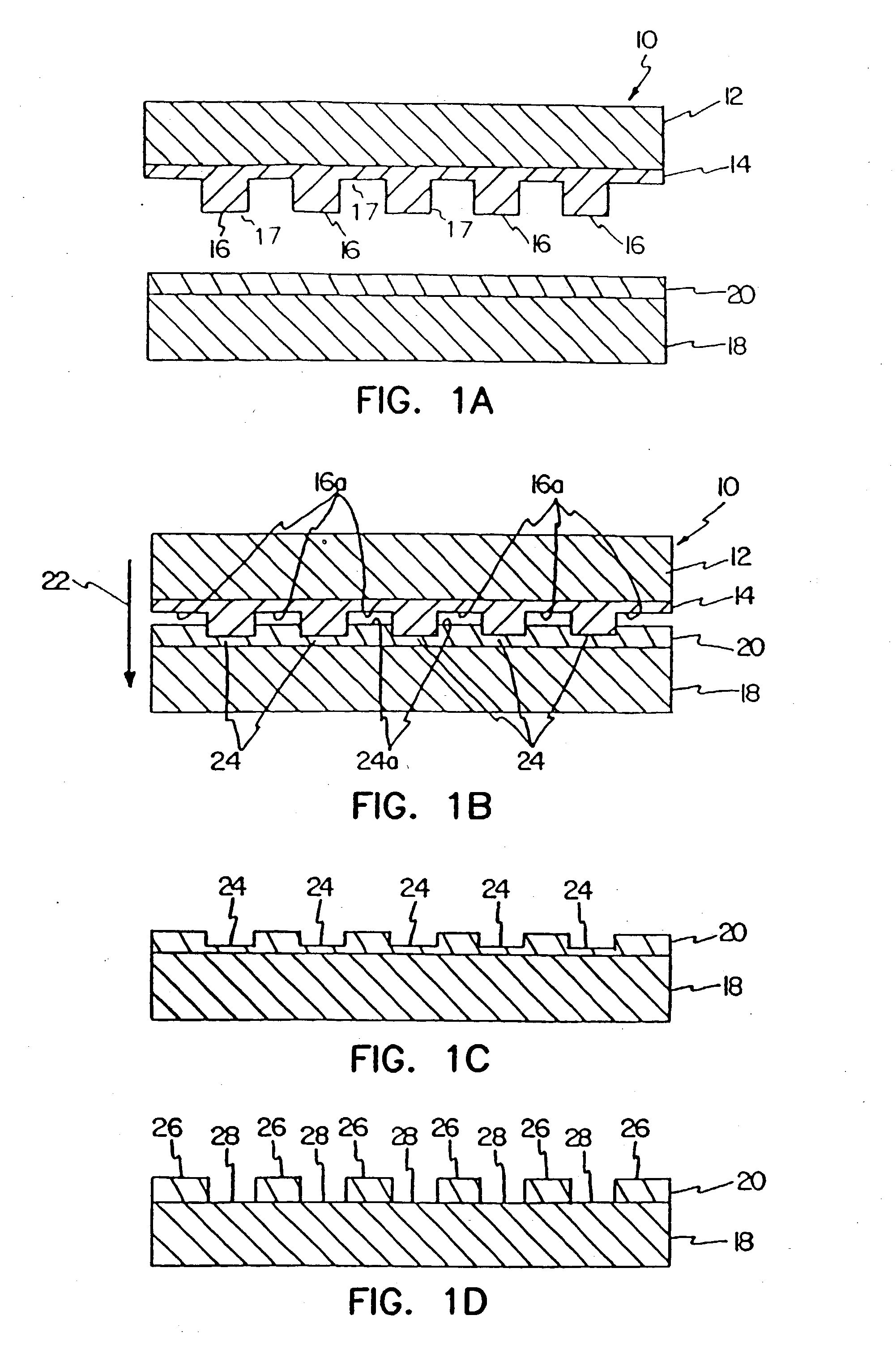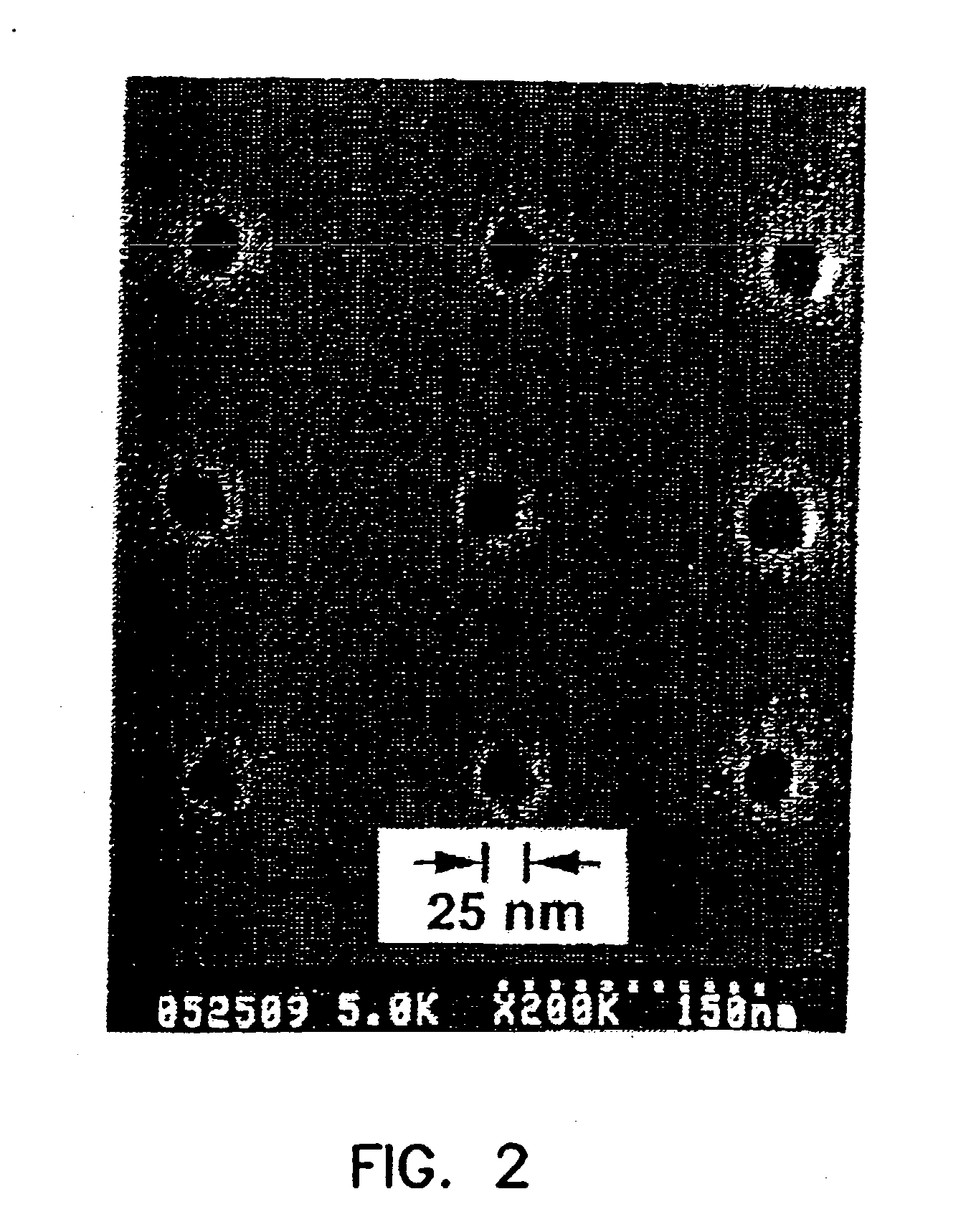Lithographic apparatus for molding ultrafine features
a lithographic apparatus and ultrafine technology, applied in the field of release surfaces, can solve the problems of high cost, low cost of x-ray lithography tools, and inability to mass produce sub-50 nm structures at a low cost, and achieve the effects of improving resolution, low chemical reactivity, and improving efficiency
- Summary
- Abstract
- Description
- Claims
- Application Information
AI Technical Summary
Benefits of technology
Problems solved by technology
Method used
Image
Examples
examples
[0061] An example of a lithographic process according to the present invention forming a pattern in a film carried on a substrate would be practiced by the steps of depositing a film on a substrate to provide a mold having a protruding feature and a recess formed thereby, the feature and the recess having a shape forming a mold pattern. At least a portion of the surface, (in this case a surface of silica or silicon-nitride is preferred) such as the protruding feature(s), if not the entire surface (the protrusions and valleys between the protrusions) onto which the film is deposited, is coated with the release material comprises a material having the formula:
RELEASE-M(X)n-1—, Formula I
RELEASE-M(X)n-m-lQm Formula II
or
RELEASE-M(OR)n-1—, Formula III
wherein
[0062] RELEASE is a molecular chain of from 4 to 20 atoms in length, preferably from 6 to 16 atoms in length, which molecule has either polar or non-polar properties;
[0063] M is a metal or semimetal atom;
[0064] X is halo...
PUM
| Property | Measurement | Unit |
|---|---|---|
| mold depth | aaaaa | aaaaa |
| mold depth | aaaaa | aaaaa |
| depth | aaaaa | aaaaa |
Abstract
Description
Claims
Application Information
 Login to View More
Login to View More - R&D
- Intellectual Property
- Life Sciences
- Materials
- Tech Scout
- Unparalleled Data Quality
- Higher Quality Content
- 60% Fewer Hallucinations
Browse by: Latest US Patents, China's latest patents, Technical Efficacy Thesaurus, Application Domain, Technology Topic, Popular Technical Reports.
© 2025 PatSnap. All rights reserved.Legal|Privacy policy|Modern Slavery Act Transparency Statement|Sitemap|About US| Contact US: help@patsnap.com



